Share
He Said ‘Excuse Me’ And Then Proceeded to Beat the Vice President
This is the latest in our One Photo series, where PhotoShelter photographers share their most meaningful photo and the story behind it. Also watc...
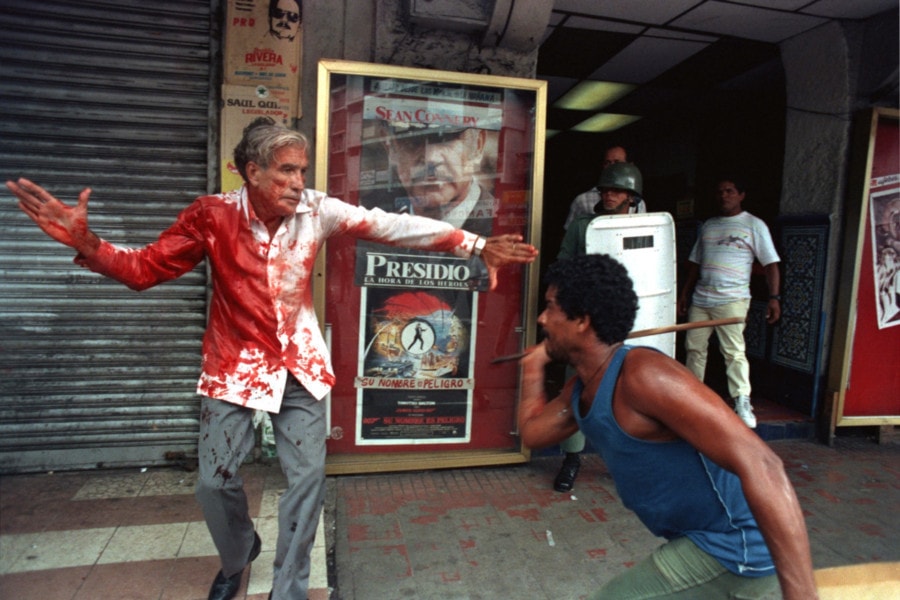
This is the latest in our One Photo series, where PhotoShelter photographers share their most meaningful photo and the story behind it. Also watch our One Photo video here, where 5 photographers tell us what their image means to them.
Panama would never be the same after 1989. That year, Dictator General Manuel Noriega’s party had lost the election to Guillermo Endara and his running mate Guillermo “Billy” Ford. (Ford had previously served as vice president in the ‘90s). Noriega nullified the results.
The would-be victors took to the streets to protest, and violence ensued. Noriega’s Dignity Battalion, nicknamed the “Ding Bats” by the opposition, attacked the crowd, beating protesters with pipes, wooden planks and guns.
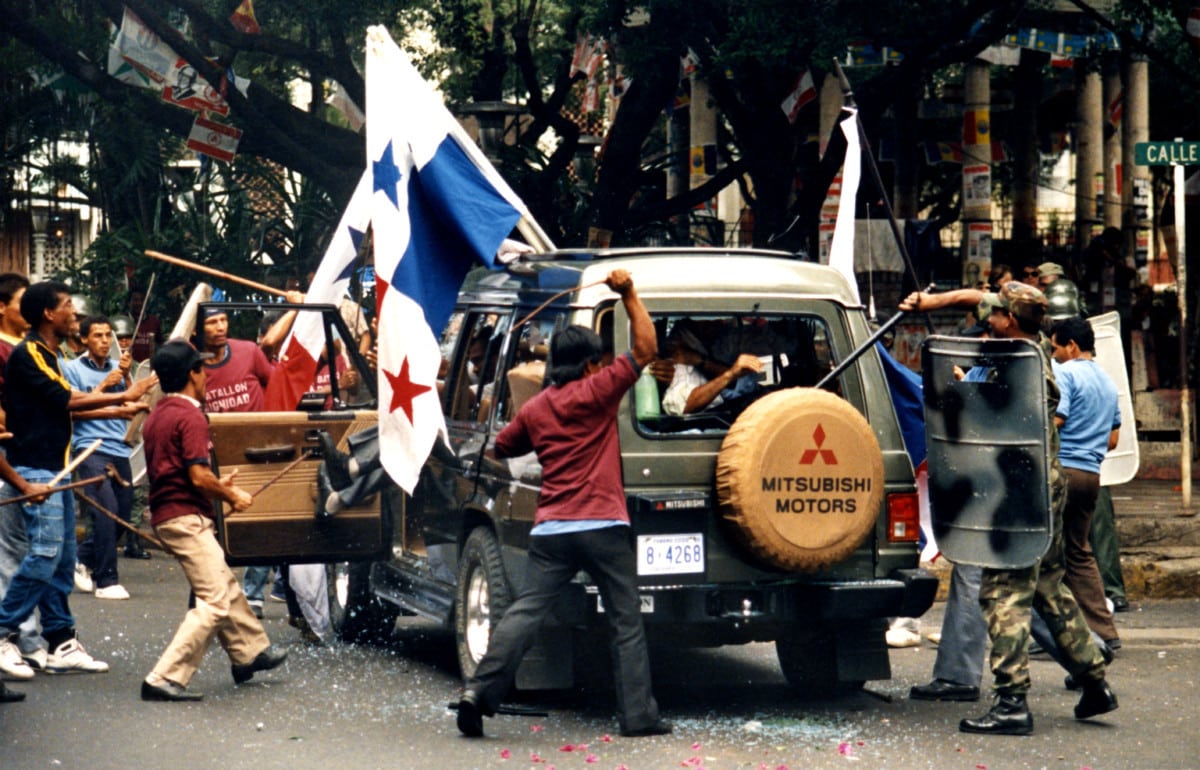
Supporters of Panamanian dictator Manuel Noriega attack elected Vice President Guillermo (Billy) Ford in Panama City, May 10, 1989. © Ron Haviv/VII Agency
Days prior, photojournalist Ron Haviv had been given a plane ticket by photographer Christopher Morris to cover the controversial election. At the time, he was freelancing and selling his photographs for $50 a piece. In Ron’s words, he barely knew what he was doing.
Now among Panama’s protestors and watching the violence erupt before him, Ron pushed his way through the crowd with his Nikon FM2. It was there he found Vice President Ford being beaten by a Noriega supporter. Ford’s bodyguard had been killed as he tried to shield him from attacks. Ford himself had been stabbed in the arm and his white shirt was drenched in blood.
It was then that Ron took this one photo.
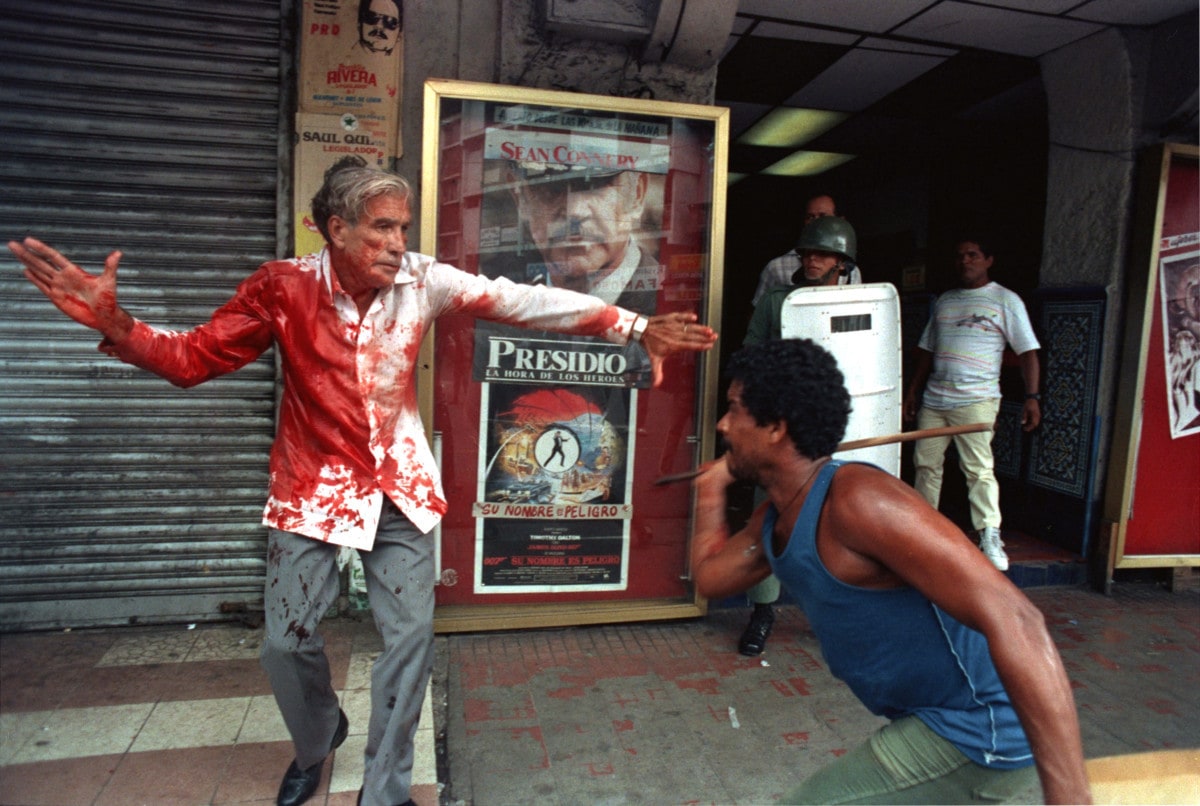
Supporters of Panamanian dictator Manuel Noriega attack elected Vice President Guillermo (Billy) Ford in Panama City, May 10, 1989. © Ron Haviv/VII Agency
“I remember it clearly,” said Ron. “I’ll never forget hearing someone behind me say, ‘Excuse me’ in Spanish, step around me, and then proceed to beat Billy Ford in front of my eyes.”
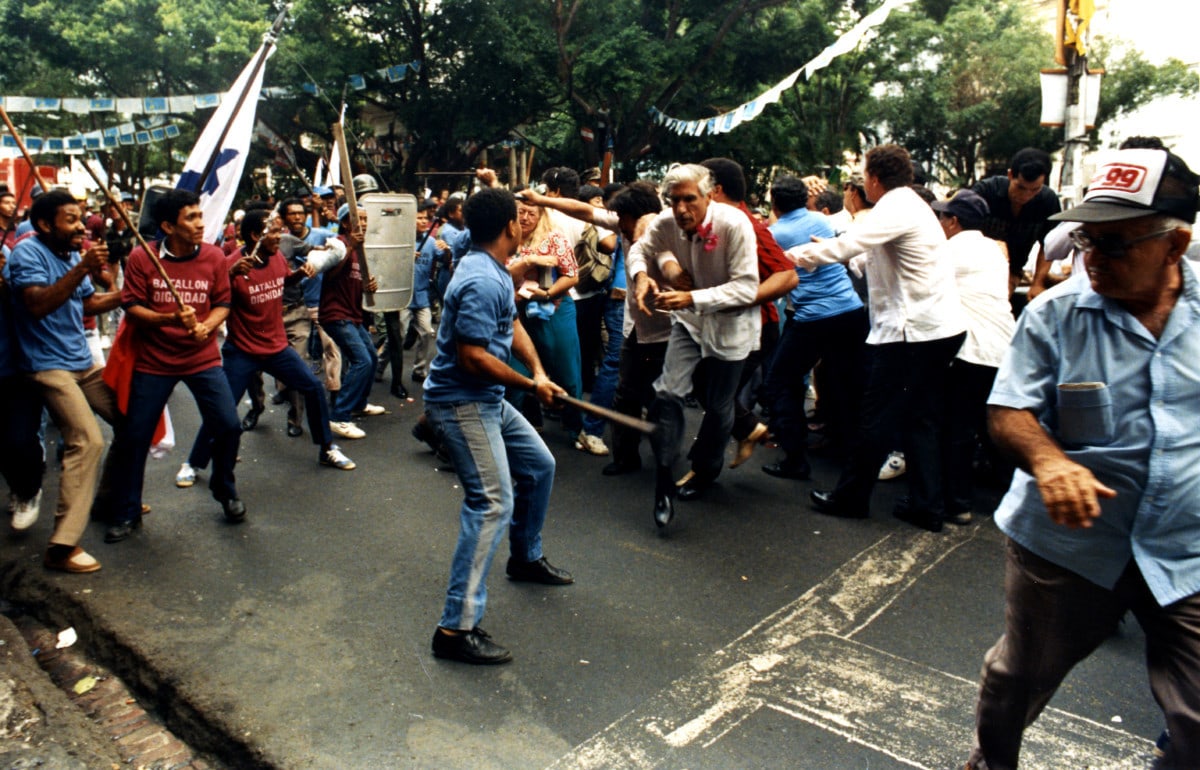
Supporters of Panamanian dictator Manuel Noriega attack elected Vice President Guillermo (Billy) Ford in Panama City, May 10, 1989. © Ron Haviv/VII Agency
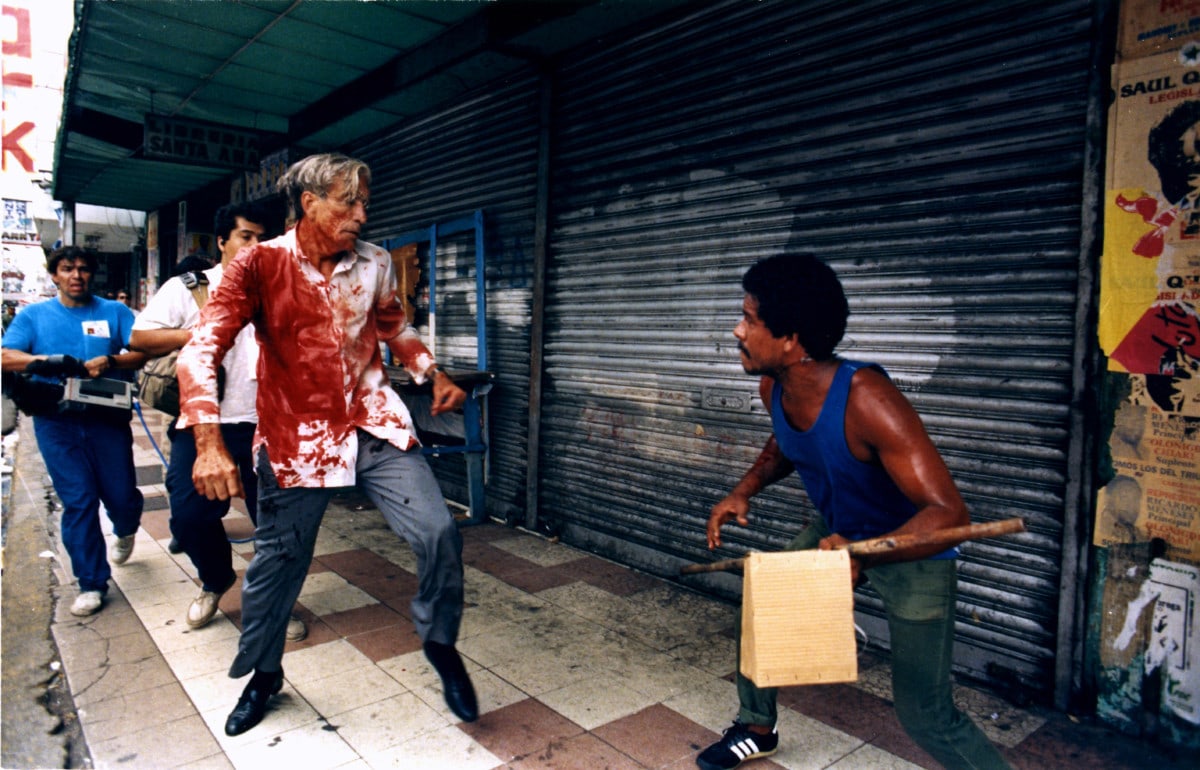
Supporters of Panamanian dictator Manuel Noriega attack elected Vice President Guillermo (Billy) Ford in Panama City, May 10, 1989. © Ron Haviv/VII Agency
Ron quickly handed off the photograph to Agence France-Presse who sent it through the wire. The next day, the photo was on the front pages of newspapers around the world. Within a week, it was on the cover of all three major U.S. news magazines: Newsweek, TIME and U.S. News & World Report, a first since the Vietnam War.
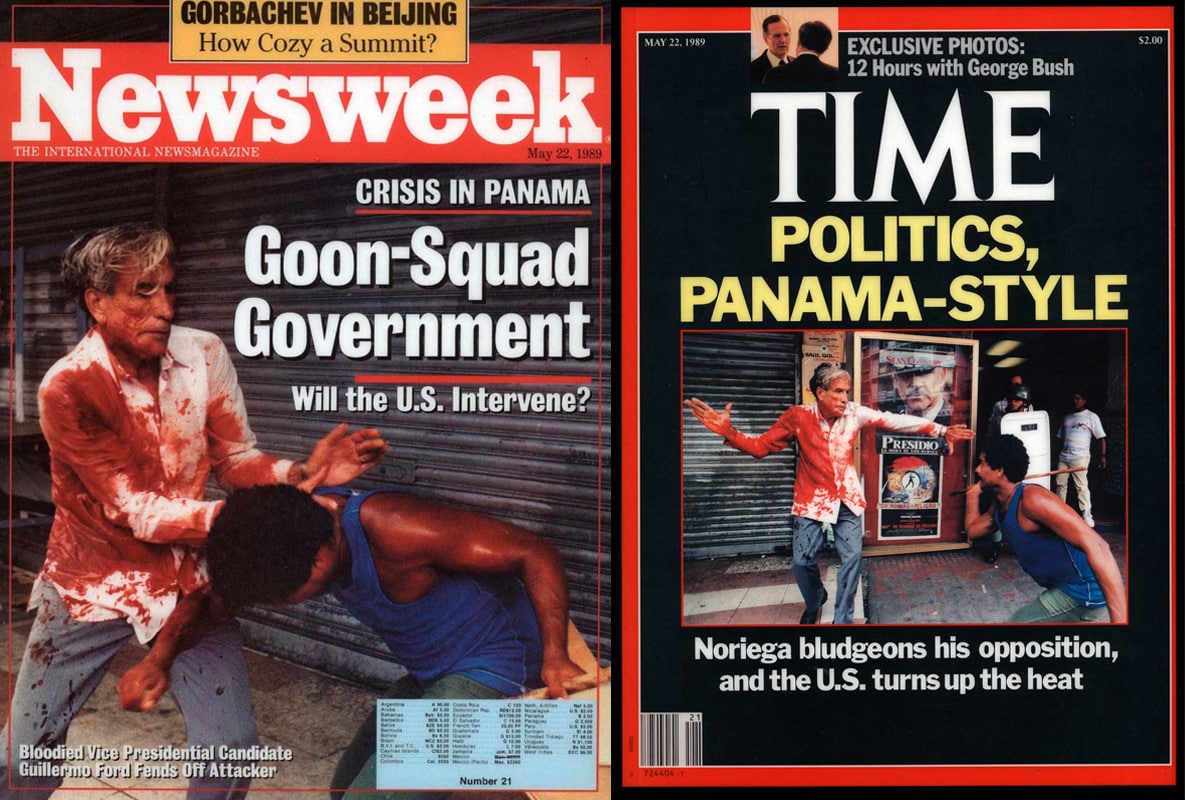
The covers of Newsweek and TIME in 1989 (© Ron Haviv/VII Agency)
“It was all very exciting to me,” said Ron. “I was only 23 years old. It was my first foreign assignment. No one had ever heard of me at the time.”
Six months later, the United States invaded Panama. In a speech to the nation on December 20, President George Bush referenced Ron’s photographs as one of the justifications for the invasion.
It was then Ron started to understand that the images he’d taken were playing a role in a very important conversation. They were having an impact.
“It wasn’t about whether or not I had agreed with the invasion,” said Ron. “It was understanding that the work I do — the work that all of us do as photojournalists — can really have an effect. And given this had all happened very early in my career, it grounded my belief that photography has real power and influence.”
Now, more than 25 years later, Ron is working on a documentary film called Biography of Photo, alongside New York University’s Dr. Lauren Walsh, who’s an expert in conflict photography and memory studies. As part of this project, Ron and Dr. Walsh are going back to Panama and Bosnia to learn how his photographs became part of those countries’ collective memories.
“Visiting Panama now, it’s remarkable to talk to people who were there the day I took that photograph,” said Ron.
“What’s become clear is that this photograph is no longer my photograph, but instead is one that belongs to the people of Panama. It’s a symbol of their democracy.”
In a recent visit, Ron had the opportunity to sit down with Panama’s current president, Juan Carlos Varela, who said he strongly believed that Ron’s photograph gave Panama back its democracy.
“That is a remarkable testament to the power of photography and the power of what we do as photojournalists,” said Ron.
“It’s something that for me, more than a quarter of a century later, still gives me belief in what I do. I realize that photography does come with limitations, but without it, where would we be?”
—
What’s your one photo? Email onephoto@photoshelter.com with your image and a few sentences telling us what it means to you.* We’ll pick our favorites to share.
*We strongly support your rights as a photographer. We will not use your images without your permission, and we claim no commercial rights to them.


